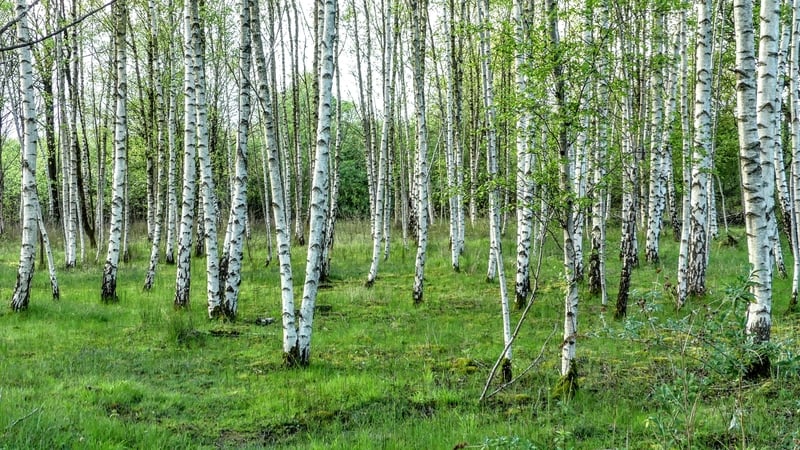Analysis: From why and how to plant, to grants, requirements and maintenance, here’s everything to know about planting on a pocket of your land
There has never been a better time to plant native trees in Ireland. Whether you’re looking to create a haven for wildlife, protect water quality, enhance biodiversity, or simply make use of under-utilised pockets of agricultural land, the Native Tree Area Scheme (NTAS) provides landowners with the perfect opportunity to establish beautiful and resilient native woodlands.
Why plant native trees?
Planting native trees is one of the most rewarding actions a landowner can take. Even small woodland areas can become magical resources that deliver climate and environmental benefits, provide shelter for animals, improve soil and water health, and become a legacy for future generations.
With careful planning and follow-up care, these woodlands can thrive – and with generous financial support now available, the journey has never been more accessible.
What is the Native Tree Area Scheme (NTAS)?
NTAS is a Department of Agriculture, Food and the Marine (DAFM) scheme that supports the creation of small native forests (up to 2 hectares). It’s designed specifically for landowners to enable them to create small pockets of native woodland without the financial strain which might occur without grant aid, and best of all, it does not require an afforestation licence, making the process smoother and faster.
Two options:
- NTA1 – Small Native Forests: For biodiversity and climate benefits on farmland.
- NTA2 – Native Forests for Water Protection: planting alongside watercourses, supporting aquatic ecosystems.
Who can apply?
Anyone who owns agricultural land in Ireland can apply – including farmers, non-farming landowners, and even companies. The only requirement is that the land is currently in use for agricultural purposes (e.g., grazing, tillage, silage) and free from constraints such as joint grazing rights.
What financial support is available?
Grants and annual premiums are available:
| intervention | Establishment Grant | Annual Premium/ha/year | Total potential premium/ha | deer tree shelter grant /ha |
| NTA 1 | €6,744 | €2,206 | €22,060 | €1,600 |
| NTA 2 | €6,744 | €2,284 | €22,840 | €1,600 |
These supports make it a viable option for even the smallest and most marginal land parcels.
How do you apply?
Applications must be submitted through a Registered Forester via the DAFM online portal. You begin by contacting your local Teagasc Forestry Adviser, who can help assess your land, explain your options, and guide you through the decision-making process.
What trees can be planted?
The scheme supports a diverse mix of native Irish trees, including:
- Oak
- Birch
- Alder
- Hazel
- Rowan
- Scots Pine
- Holly
- Crab Apple
- Cherry
- Willow species and more.
Tree species are chosen based on your site conditions, mainly depending on soil suitability, vegetation and location. For instance a drier mineral soil will consist mainly of Oak, Birch and scots pine species, where a wetter site would have higher percentages of alder and birch as oak wouldn’t be suitable to this type of soil and of course a mixture of other approved suitable species to be planted around the site to really make it feel like a native woodland that has naturally developed. Teagasc and your forester can help tailor the mix to your site.
Site requirements & design
For NTA1 (Biodiversity):
- 0.1 – 1.0 hectare
- Minimum 20m width
- Multiple small plots allowed (min 0.1ha each)
- 3x3m spacing (or 4x4m if deer shelters are needed)
For NTA2 (Water Protection):
- Width: 20–24m (10–13m setback required from watercourse)
- Trees planted up to 20% of setback area
- No planting within 2m of water
Is it permanent?
Yes – woodlands planted under NTAS are protected under the Forestry Act 2014, representing a permanent land use change.
Who does the work?
- Planning: Carried out by a Registered Forester.
- Planting/Fencing: Can be done by the landowner or arranged through the forester.
How much maintenance work is involved once the forest is planted?
The first 4 years after planting require the most maintenance. Key tasks include weed control to prevent young trees being outcompeted, checking and repairing tree shelters or fencing (especially in areas with deer), and replanting any failed trees to maintain stocking levels. After this establishment phase, maintenance reduces significantly. Occasional inspections, minor pruning, and boundary management may still be needed, but by year 10, the woodland is largely self-sustaining. With a bit of care early on, your woodland can thrive with minimal long-term input.
A lasting legacy
Creating a native woodland is more than a land use change – it’s an act of stewardship. With native trees taking root, these spaces evolve into rich, biodiverse ecosystems where wildlife thrives, carbon is stored, and water is protected. These woodlands will grow to be appreciated not just by you, but by generations to come.
“It’s an incredible scheme, especially for smaller pockets of marginal farmland. In just eight weeks my application was approved, and now I can envision a beautiful native woodland taking root on my land. It’s a fantastic opportunity to transform these spaces into thriving ecosystems.” – Jim Curtin, Cork













